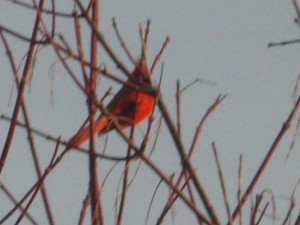Two different teams of scientists have got success in identifying a gene-encoded enzyme in birds which helps them convert yellow pigments obtained from the diet into red pigments, and then birds use these pigments to color their bills, feathers, and bare skin.
These two studies have been published in the journal Current Biology.
The first study was conducted by an international collaboration between three separate teams. These teams were led by evolutionary biologist Ricardo Lopes (from Universidade do Porto in Portugal); biochemist James Johnson (PhD student in the Department of Biological Sciences at Auburn University); and Matthew Toomey (a postdoctoral fellow at the Washington University School of Medicine).
This study analyzed the source of red color in “red factor” canaries. Scientists compared whole-genome sequences from yellow and red canaries to red siskins to identify the location of the genes which produce red color in canaries. Scientists were able to identify two specific regions in red factor canary DNA: first on chromosome 8 and second on chromosome 25, that were identical to red siskin DNA.
The results revealed that a specific cytochrome P450 enzyme on chromosome 8, known as CYP2J19, may be responsible for red coloration.
“We discovered a gene that codes for an enzyme that enables this yellow-to-red conversion in birds,” said co-author, Miguel Carneiro from the Universidade do Porto in Portugal.
“To produce red feathers, birds convert yellow dietary pigments known as carotenoids into red pigments and then deposit them in the feathers,” he added.
The second study was jointly carried out by two research teams. The first team was led by evolutionary geneticist Nicholas Mundy, a Reader in the Zoology Department at the University of Cambridge, and the second team was headed by evolutionary biologist Jessica Stapley, an independent research fellow in the Department of Animal and Plant Sciences at the University of Sheffield. This study analyzed the genes of domesticated wild-type and yellow-beaked zebra finches, and it was concluded that CYP2J19 is responsible for red pigmentation in zebra finch beaks and legs.
“Birds cannot synthesize these red pigments endogenously. They have to obtain them from their diet,” Dr Carneiro told BBC News.
It is believed that red canaries were created by crossing yellow canaries with red siskin about 100 years ago.
“By a number of crosses, throughout many generations, they fixed the ability to convert yellow pigments into red pigments, in some breeds of canary.”
Dr Nicholas Mundy at the University of Cambridge, UK said: “There’s a large family of cytochrome P450s and they’re best known because they are the genes that metabolize most medicines in the body.”
“The fact that we identified the same gene in two deeply divergent species suggests that this is likely to be very general in the bird world, and many species will use the same mechanism to produce red pigments.”

